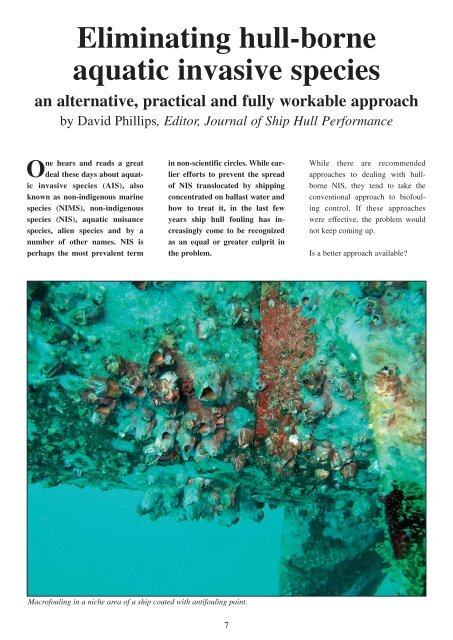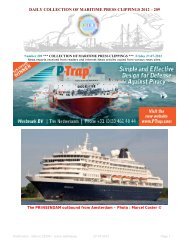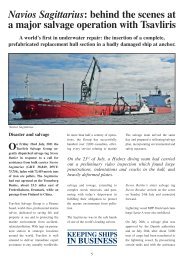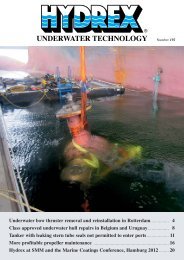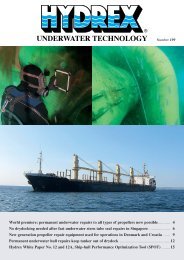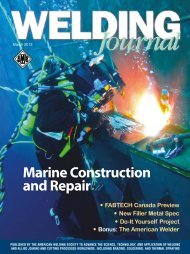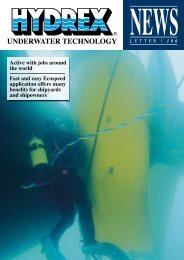Ecospeed newsletter December 2012 - Hydrex Underwater ...
Ecospeed newsletter December 2012 - Hydrex Underwater ...
Ecospeed newsletter December 2012 - Hydrex Underwater ...
You also want an ePaper? Increase the reach of your titles
YUMPU automatically turns print PDFs into web optimized ePapers that Google loves.
Eliminating hull-borne<br />
aquatic invasive species<br />
an alternative, practical and fully workable approach<br />
by David Phillips, Editor, Journal of Ship Hull Performance<br />
One hears and reads a great<br />
deal these days about aquatic<br />
invasive species (AIS), also<br />
known as non-indigenous marine<br />
species (NIMS), non-indigenous<br />
species (NIS), aquatic nuisance<br />
species, alien species and by a<br />
number of other names. NIS is<br />
perhaps the most prevalent term<br />
in non-scientific circles. While earlier<br />
efforts to prevent the spread<br />
of NIS translocated by shipping<br />
concentrated on ballast water and<br />
how to treat it, in the last few<br />
years ship hull fouling has increasingly<br />
come to be recognized<br />
as an equal or greater culprit in<br />
the problem.<br />
While there are recommended<br />
approaches to dealing with hullborne<br />
NIS, they tend to take the<br />
conventional approach to biofouling<br />
control. If these approaches<br />
were effective, the problem would<br />
not keep coming up.<br />
Is a better approach available<br />
Macrofouling in a niche area of a ship coated with antifouling paint.<br />
7


